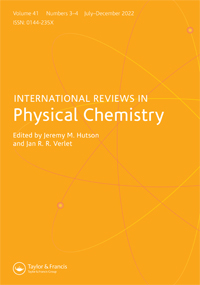Paramagnetic chemical exchange saturation transfer agents and their perspectives for application in magnetic resonance imaging
IF 2.5
2区 化学
Q3 CHEMISTRY, PHYSICAL
引用次数: 6
Abstract
Magnetic resonance imaging (MRI) has emerged as very important tool in biomedical research and is an essential diagnostic method in clinical radiology today. Lately, chemical exchange saturation transfer (CEST) has become a very attractive alternative to the classical MRI methodologies. CEST uses a unique operating mechanism to generate contrast and possesses great potential for functional imaging investigations, especially in combination with diamagnetic and paramagnetic (dia- and paraCEST, respectively) contrast agents. However, CEST is governed by a combination of several parameters that together influence the overall intensity of observed CEST effect. The understanding of the physics of CEST has advanced significantly to provide a reliable assessment on contribution of individual parameters important for generation of a CEST signal. Nevertheless, there seem to be a missing link between the above mentioned theory and its practical application, especially in the development of new probes. This review article provides background information on CEST and paraCEST, analyzing the importance of the main physical parameters, such as exchange rate, saturation power and time, or paramagnetic shift and relaxation times. We describe the different types of paramagnetic complexes based on lanthanide or transition metal ions, and discuss their properties in the context of potential CEST application.顺磁化学交换饱和转移剂及其在磁共振成像中的应用前景
磁共振成像(MRI)已成为生物医学研究中非常重要的工具,也是当今临床放射学必不可少的诊断方法。近年来,化学交换饱和转移(CEST)已成为传统MRI方法的一种非常有吸引力的替代方法。CEST使用独特的操作机制来产生造影剂,在功能成像研究中具有很大的潜力,特别是与抗磁性和顺磁性造影剂(分别为dia和paraCEST)结合使用。然而,CEST是由几个参数的组合控制的,这些参数共同影响观察到的CEST效应的总体强度。对CEST物理特性的理解已经有了显著的进步,可以对产生CEST信号的各个重要参数的贡献进行可靠的评估。然而,在上述理论与其实际应用之间,特别是在新探测器的开发中,似乎缺少一个环节。本文综述了CEST和paraCEST的背景资料,分析了主要物理参数的重要性,如汇率,饱和功率和时间,或顺磁位移和弛豫时间。我们描述了基于镧系或过渡金属离子的不同类型的顺磁配合物,并讨论了它们在CEST潜在应用背景下的性质。
本文章由计算机程序翻译,如有差异,请以英文原文为准。
求助全文
约1分钟内获得全文
求助全文
来源期刊
CiteScore
14.20
自引率
1.60%
发文量
5
审稿时长
1 months
期刊介绍:
International Reviews in Physical Chemistry publishes review articles describing frontier research areas in physical chemistry. Internationally renowned scientists describe their own research in the wider context of the field. The articles are of interest not only to specialists but also to those wishing to read general and authoritative accounts of recent developments in physical chemistry, chemical physics and theoretical chemistry. The journal appeals to research workers, lecturers and research students alike.

 求助内容:
求助内容: 应助结果提醒方式:
应助结果提醒方式:


